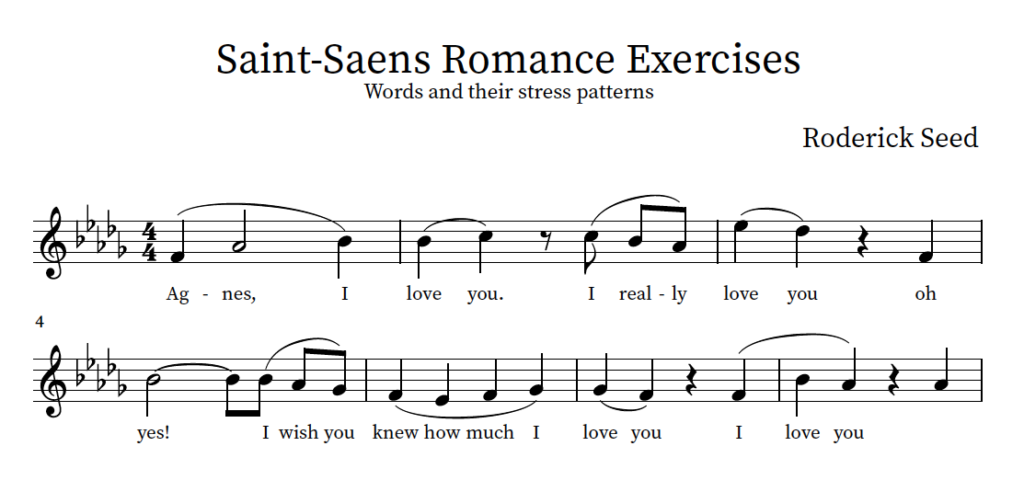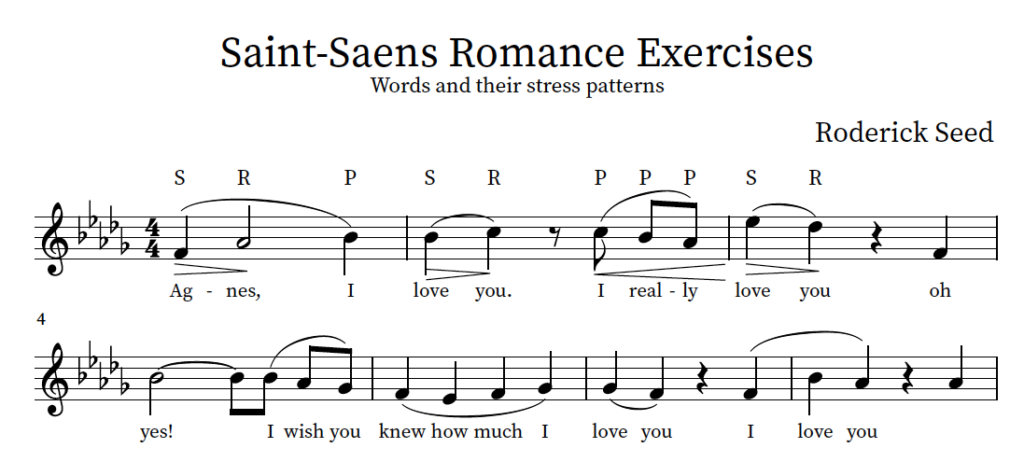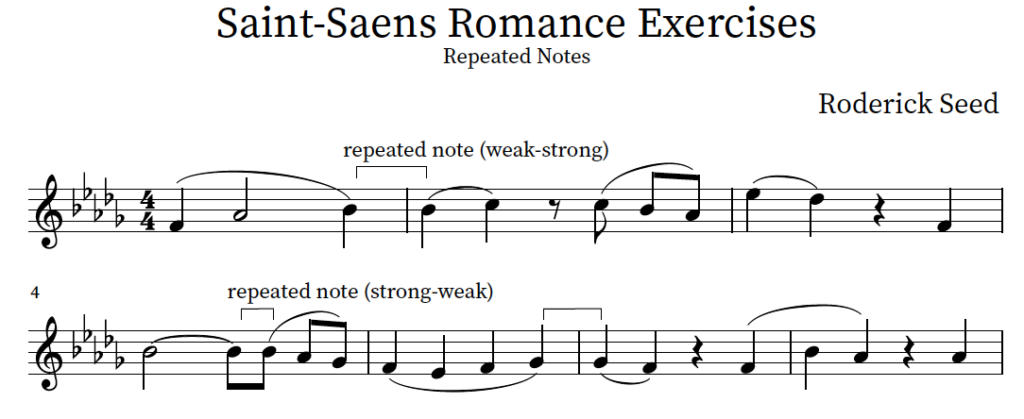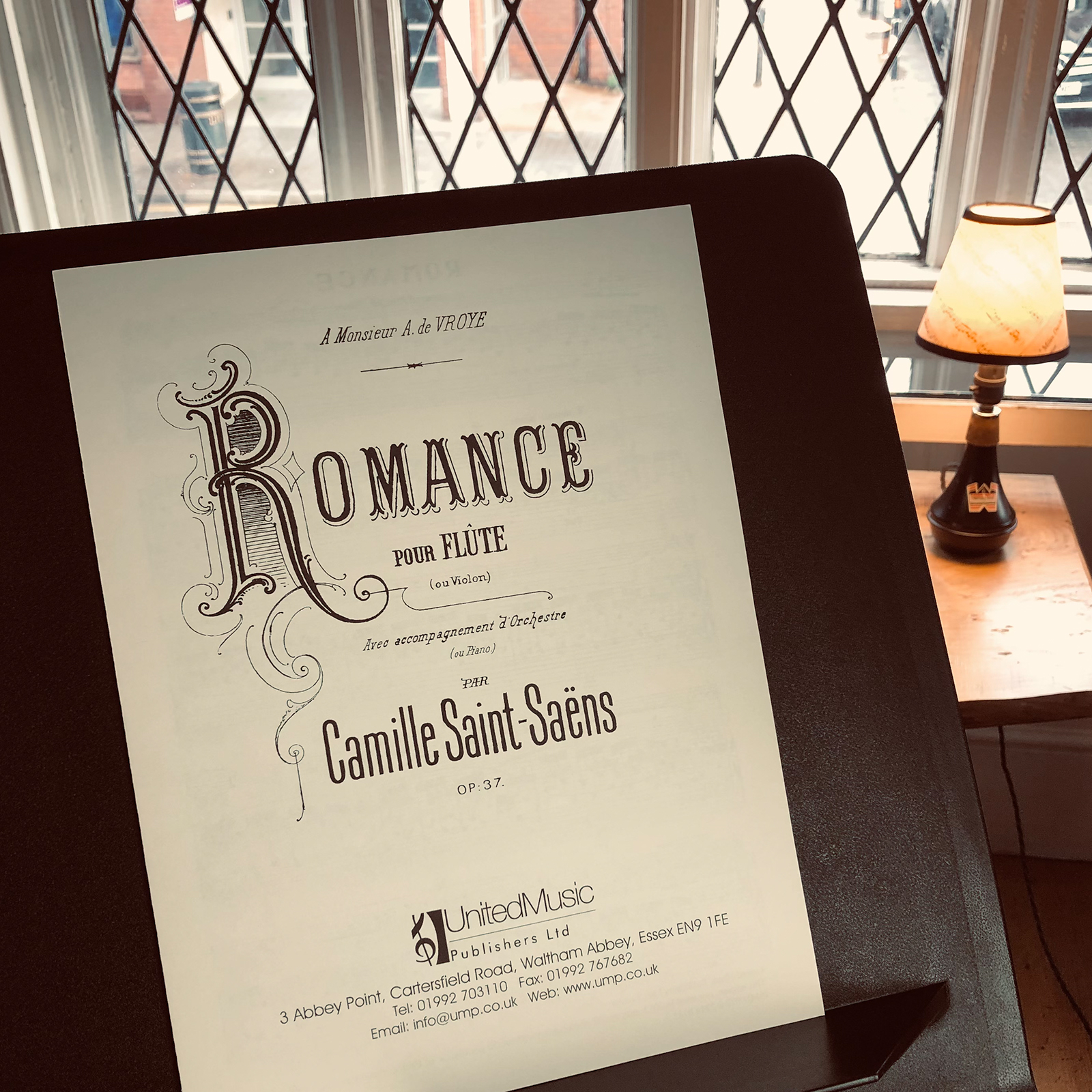The Romance by Camille Saint-Saëns is one of my absolute favourite pieces – full of warmth and charm and not without its challenges. I recently did a warm-up video for the British Flute Society‘s Warm up Wednesday series and used some simple warm-up exercises centred around this piece. So, here is a blog to give some practice tips for making the most out of this beautiful piece.
Tone Colour
This piece is great for practising tone colour in different dynamics and registers. The main melody appears in Db major and E major, in the low-mid register and later in the high register. Db major, for me, is quite rich and full of warmth, so to achieve that with a soft dynamic is the first challenge. Thinking of the vowel, “ah” and where that resonates (vibrates) in your body will help achieve a warm sound. Singing and playing the melody is a great way of finding an open and resonant sound. If you find this produces a louder dynamic, work gradually on playing more quietly without losing the warmth of the sound. E major, by contrast, is a brighter colour, which might respond better to the vowel “ee” or somewhere in between “ah” and “ee”, which resonates higher up in the body. Singers sometimes refer to this as their “head voice”. Then try an octave higher and louder, as written in the last section of the piece. By now, your flute should be singing with full voice and vibrancy. See my post on finding resonance on the flute for more resonance tips!
Phrasing
A good place to start with phrasing is to look at the metre or time signature. In 4/4, it is assumed that the first beat is the strongest in the bar, followed by beat 3. Therefore, be careful that notes that fall on beats 2 and 4 do not pop out or sound stronger. To help with this sense of metre, we can put words to the melody and follow their stress patterns (preparation, stress and release)
Stress Patterns
If we take a word like “Darling” or “Agnes”, we put the emphasis or stress on the first syllable and the second syllable is weaker or released. (Stress and Release). If we take the phrase “I love you”, the “I” acts as an upbeat or preparation for the stress of “love” and release on “you”. See the example below. You can change the words and make your own story!

So, following the stress patterns of those words, I’ve added some phrase marks to help shape the melodic line. “I love you” is a prime example of how to play an appoggiatura, where we have a note of preparation (P), a note of stress (S), and a note of release (R). This can be decorated (I really love you). The stressed note (love), falls where the note is dissonant to the harmony and then it resolves (you).

Repeated notes
There are many repeated notes in this piece and playing them clearly and expressively is something that takes careful practice. We don’t want to cut the first note, because you wouldn’t create a gap when you sing “I love you”- there is a connection between the I and L of Love. (Another example: Twinkle Twinkle Little Star- listen to the connection of the syllables).
The second note isn’t articulated harder either. So, one has to diminish the first note, not stopping or cutting the air, before rearticulating the next note. The challenge is that with the small diminuendo, the pitch shouldn’t drop, so one needs to coordinate getting softer with a small movement of the jaw/lower lip. As you get softer, angle your air gradually higher by moving the jaw/lower lip forwards. Then, when you play the next note a bit louder, remember to angle the air lower down by doing the opposite movement. I explain this more in my book

Intervals
Here is an exercise to practice playing with your best singing tone through the intervals found in this piece. Practice as harmonics to get a sense of the air speed and direction you need. Observe the phrase markings that follow the phrasing in the Romance.

Intonation
One last exercise to practice intonation. This comes at the end of the Romance and the last note can often sound flat. I practice this with a drone from a tuning app and use harmonics and sensitive fingerings (see my book for a list) to check the pitch and then try to match that with the standard fingering. As the Ab is a perfect 5th in a Db major chord, it needs to be slightly higher than equal temperament to sound pleasantly in tune!

Warm up Wednesdays
Check out the video I did for BFS Warm Up Wednesdays on their website for demonstrations and more warm up exercises based around this lovely piece of music!
Thanks for reading and Happy Fluting!


